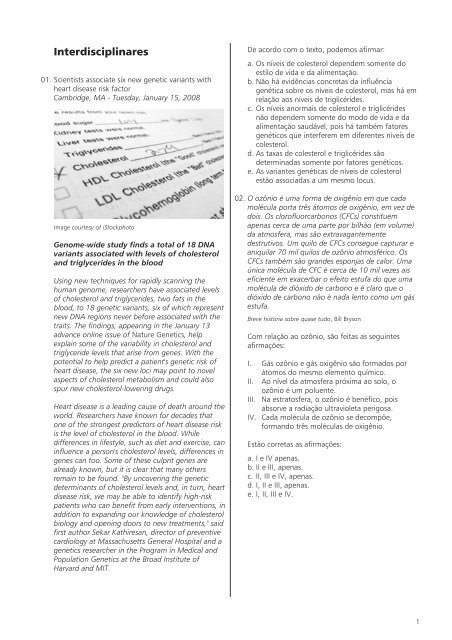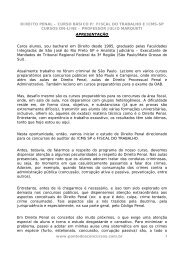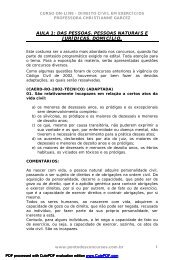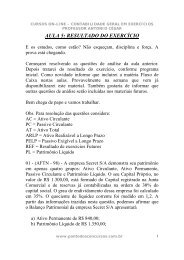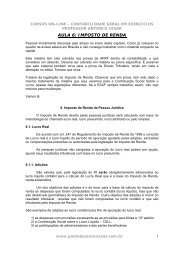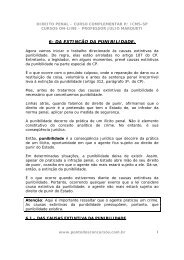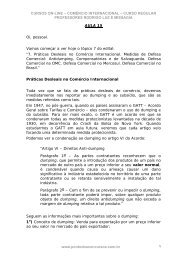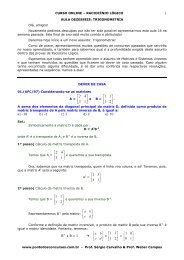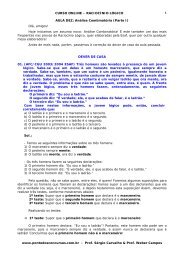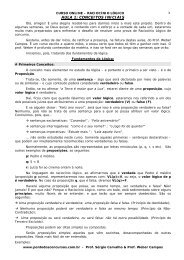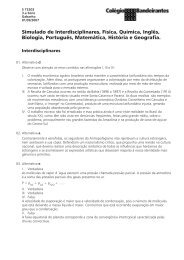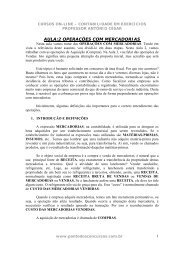simuladao-enem-provas-gabaritos - 2008
simuladao-enem-provas-gabaritos - 2008
simuladao-enem-provas-gabaritos - 2008
Create successful ePaper yourself
Turn your PDF publications into a flip-book with our unique Google optimized e-Paper software.
Interdisciplinares<br />
01. Scientists associate six new genetic variants with<br />
heart disease risk factor<br />
Cambridge, MA - Tuesday, January 15, <strong>2008</strong><br />
Image courtesy of iStockphoto<br />
Genome-wide study finds a total of 18 DNA<br />
variants associated with levels of cholesterol<br />
and triglycerides in the blood<br />
Using new techniques for rapidly scanning the<br />
human genome, researchers have associated levels<br />
of cholesterol and triglycerides, two fats in the<br />
blood, to 18 genetic variants, six of which represent<br />
new DNA regions never before associated with the<br />
traits. The findings, appearing in the January 13<br />
advanceonlineissueofNature Genetics, help<br />
explain some of the variability in cholesterol and<br />
triglyceride levels that arise from genes. With the<br />
potential to help predict a patient's genetic risk of<br />
heart disease, the six new loci may point to novel<br />
aspects of cholesterol metabolism and could also<br />
spur new cholesterol-lowering drugs.<br />
Heart disease is a leading cause of death around the<br />
world. Researchers have known for decades that<br />
one of the strongest predictors of heart disease risk<br />
is the level of cholesterol in the blood. While<br />
differences in lifestyle, such as diet and exercise, can<br />
influence a person's cholesterol levels, differences in<br />
genes can too. Some of these culprit genes are<br />
already known, but it is clear that many others<br />
remain to be found. "By uncovering the genetic<br />
determinants of cholesterol levels and, in turn, heart<br />
disease risk, we may be able to identify high-risk<br />
patients who can benefit from early interventions, in<br />
addition to expanding our knowledge of cholesterol<br />
biology and opening doors to new treatments," said<br />
first author Sekar Kathiresan, director of preventive<br />
cardiology at Massachusetts General Hospital and a<br />
genetics researcher in the Program in Medical and<br />
Population Genetics at the Broad Institute of<br />
Harvard and MIT.<br />
De acordo com o texto, podemos afirmar:<br />
a. Os níveis de colesterol dependem somente do<br />
estilo de vida e da alimentação.<br />
b. Não há evidências concretas da influência<br />
genética sobre os níveis de colesterol, mas há em<br />
relação aos níveis de triglicérides.<br />
c. Os níveis anormais de colesterol e triglicérides<br />
não dependem somente do modo de vida e da<br />
alimentação saudável, pois há também fatores<br />
genéticos que interferem em diferentes níveis de<br />
colesterol.<br />
d. As taxas de colesterol e triglicérides são<br />
determinadas somente por fatores genéticos.<br />
e. As variantes genéticas de níveis de colesterol<br />
estão associadas a um mesmo locus.<br />
02. O ozônio é uma forma de oxigênio em que cada<br />
molécula porta três átomos de oxigênio, em vez de<br />
dois. Os clorofluorcarbonos (CFCs) constituem<br />
apenas cerca de uma parte por bilhão (em volume)<br />
da atmosfera, mas são extravagantemente<br />
destrutivos. Um quilo de CFCs consegue capturar e<br />
aniquilar 70 mil quilos de ozônio atmosférico. Os<br />
CFCs também são grandes esponjas de calor. Uma<br />
única molécula de CFC é cerca de 10 mil vezes ais<br />
eficiente em exacerbar o efeito estufa do que uma<br />
molécula de dióxido de carbono e é claro que o<br />
dióxido de carbono não é nada lento como um gás<br />
estufa.<br />
Breve história sobre quase tudo, Bill Bryson<br />
Com relação ao ozônio, são feitas as seguintes<br />
afirmações:<br />
I. Gás ozônio e gás oxigênio são formados por<br />
átomos do mesmo elemento químico.<br />
II. Ao nível da atmosfera próxima ao solo, o<br />
ozônio é um poluente.<br />
III. Na estratosfera, o ozônio é benéfico, pois<br />
absorve a radiação ultravioleta perigosa.<br />
IV. Cada molécula de ozônio se decompõe,<br />
formando três moléculas de oxigênio.<br />
Estão corretas as afirmações:<br />
a. I e IV apenas.<br />
b. II e III, apenas.<br />
c. II, III e IV, apenas.<br />
d. I, II e III, apenas.<br />
e. I, II, III e IV.<br />
1


